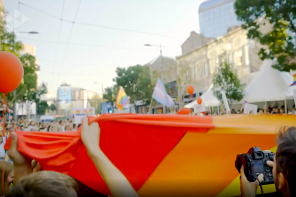The Vatican agency that reviews cases for new saints has ordered Cardinal Newman’s body exhumed and buried elsewhere. Chief among the stated reasons is the need to place his relics somewhere better suited for receiving pilgrims. What church officials don’t say is that the move will separate Newman’s remains from those of his friend, Ambrose St. John. They were buried together because Newman insisted upon it.
There’s nothing unusual in managing relics prudently. They are scarce and potent symbols that belong to a wider history. The Vatican will want Newman’s relics authenticated and registered before they are presented for public veneration. Some portions of them may be taken for distribution to other shrines, perhaps to Rome itself. In less fastidious centuries, they might well have been divided and divided again, then shipped, bartered, stolen—not to say refurbished or manufactured from scratch. None of these indignities is likely to happen to Newman’s bones, but they are still being treated as the property of the church to which he converted so publicly and so painfully. I also concede that it makes practical sense to move the newest English saint into a big church nearer Birmingham’s center and out of the suburbs. Newman is buried now within a quiet graveyard on the Lickey Hills that he secured for his religious community. He is one plain white cross among many. There is no impressive mausoleum—and no provision for tour groups, educational exhibits, or gift shops. As the British historian Alan Bray says, “anyone who has found their way here already knows whose grave this is.”
But the present grave isn’t Newman’s alone. Indeed, he never spoke of it as his. It was the grave of a friend who had died much too early after sharing more than thirty years with him. As soon as Newman began to give detailed instructions to his executors, he insisted on being buried with that man. “I wish, with all my heart, to be buried in Fr. Ambrose St. John’s grave—and I give this as my last, my imperative will.” Five years later, he added the note: “This I confirm and insist on.” Coming back to the instructions a final time, he added the phrase “and command,” with a line under the last word. “This I confirm and insist on and command.”
The emphatic language mirrors the force of their friendship. Newman once described St. John’s devotion: “From the first he loved me with an intensity of love, which was unaccountable.” Unaccountable, perhaps, but not unshared. When St. John died, Newman confessed in a letter: “I have ever thought no bereavement was equal to that of a husband’s or a wife’s, but I feel it difficult to believe that any can be greater, or any one’s sorrow greater, than mine.” To church-goers, such sentiments may now sound peculiar—not to say, queer. That reveals more about our categories than Newman’s heart. In the decades since his burial, we have lost not only an ear for the old languages of Christian friendship, but any patience for the holy ambiguity of passion.
Alan Bray uses the shared grave of Newman and St. John as the culminating example in his book, The Friend. He uses it because it was neither peculiar nor queer. Old churches are filled, Bray argues, with reminders of enduring Christian friendships that sometimes displaced marriage and often outweighed it in the affections. A tomb for two crusaders in Istanbul shows their helmets joined in a kiss of peace, their heraldic shields intermingled as if they were a married couple. Bronze plaques or sculpted friezes in college chapels record the undying love of scholar-friends. Parish churches preserve long, unashamed devotion between two unmarried women. We modern Christians blink away these monuments to friendship because we can no longer see the kinds of relationship that they memorialize.
Modern churches have abandoned or suppressed rites for blessing sworn friendships. Eastern Orthodoxy once celebrated proper liturgies for them, and there are traces of some such liturgy in western churches as well. The historian John Boswell made these rites the centerpiece of his last and most controversial book, Same-Sex Unions in Premodern Europe. The comic strip, Doonesbury, tried to summarize his argument in a single line: “For 1,000 years the church sanctioned rituals for HOMOSEXUAL marriages!” Boswell actually suggested something more interesting, and his suggestions were refined and substantiated by Bray. For both men—gifted historians, but also gay-identified men and committed Catholics—the churches’ own past knew more kinds of relationships than can now be tolerated.
Modern Christians, straight and queer alike, tend to read intense bonds between women or between men either as closeted homosexuality or as a risky phase on the way to a proper and permanent heterosexual bond. Be buried with a friend? How weird for old men! They must have been secret lovers! Bray’s point is precisely that Newman and St. John cannot be understood as secret lovers in fact or in frustrated intention. He recalls their intense love because it doesn’t fit into the neat dichotomy of friendship and sexual love—a dichotomy that the churches now trumpet as if it were written into the gospels. Currently church condemnations of same-sex desire suppose that it is possible to segregate same-sex friendship from homosexuality, non-genital affection from genital desire. The Catholic Church in particular was slow to adopt the duality heterosexual/homosexual into its official language, but now it uses the opposed pair without hesitation to formulate moral teaching and to write policy.
No wonder, then, that church officials find themselves uncomfortable before Newman’s shared grave. At a time when the Vatican is hunting for homosexuals in seminaries and the priesthood, an ordained saint cannot be a homosexual. He cannot even appear to be a homosexual. Whatever he felt, whatever he wrote, Newman the saint must be an unblemished heterosexual. He must be perfectly straight—even if it means violating his express command or denying the church’s old, ambivalent traditions around same-sex love.
The Catholic Archdiocese of Birmingham refuses to announce any further details about the unburying and reburying of Newman. I don’t know whether they fear gawkers or protesters. If I knew the exact date of the transfer, I for one might be tempted to show up. I might take some lilies as tokens of the resurrection of the body. I would certainly speak a silent apology to the disturbed remains. But most of all I would witness to all the varieties of Christian life that are erased when churches begin to preach recent ideologies of sex. There is so much more to Christian life than the clinical categories of heterosexuality and homosexuality can compass. Certainly there was more in the shared life and bodily death of John Henry Newman and his friend.




